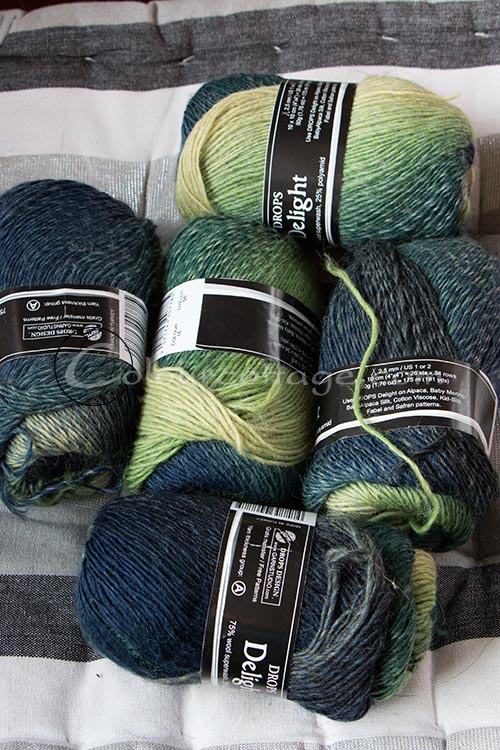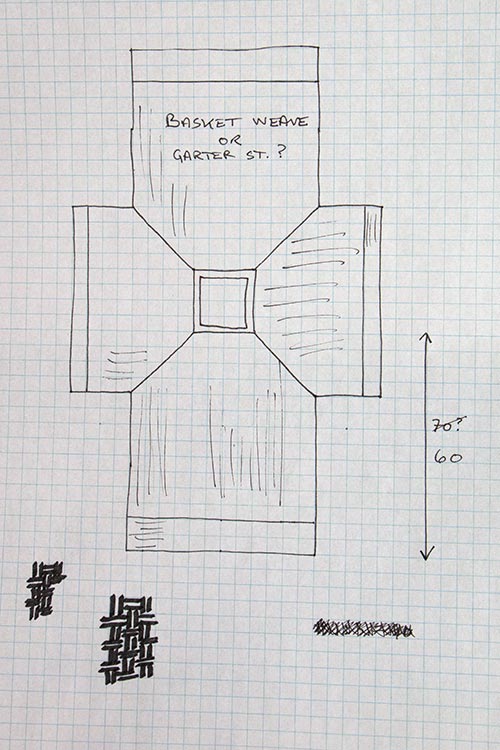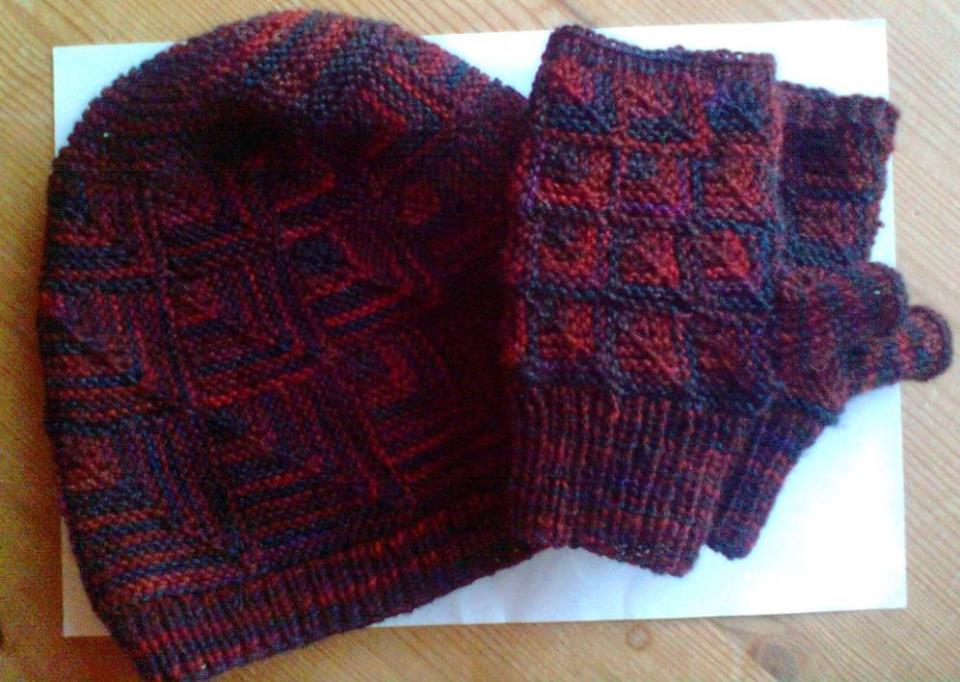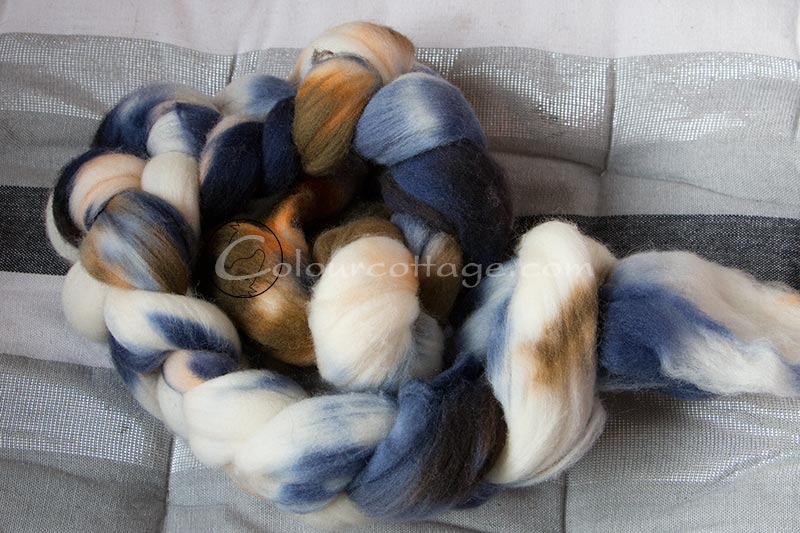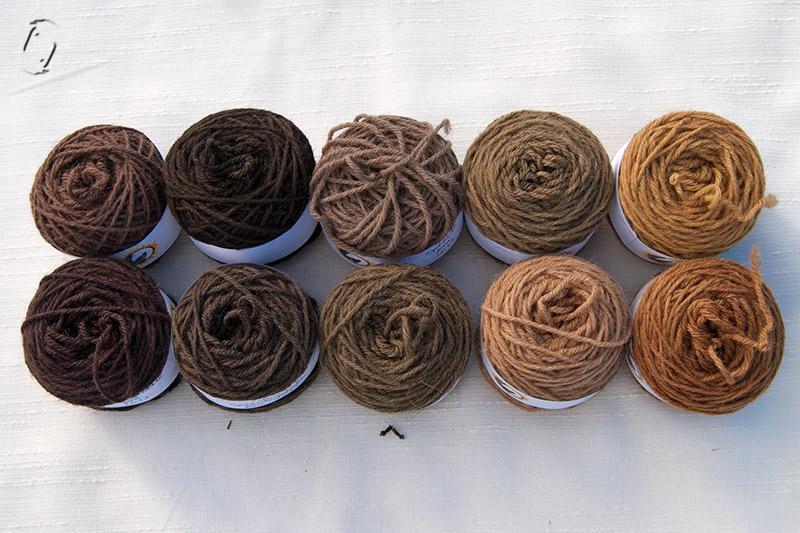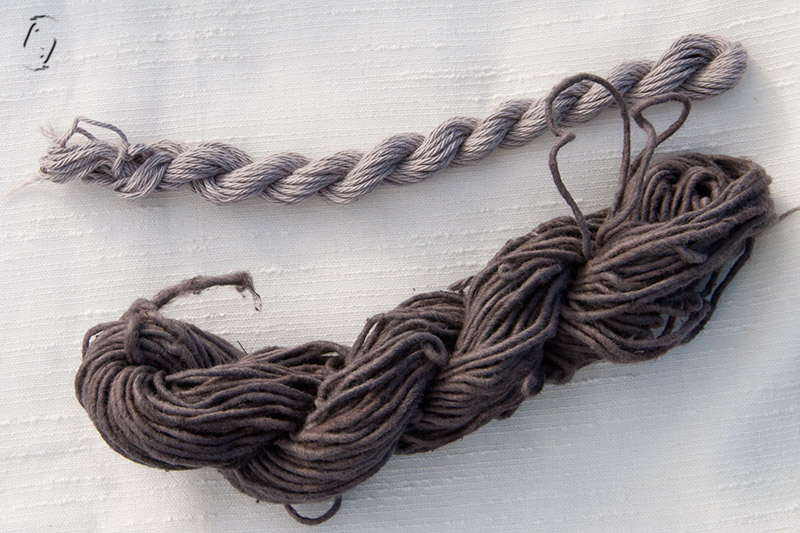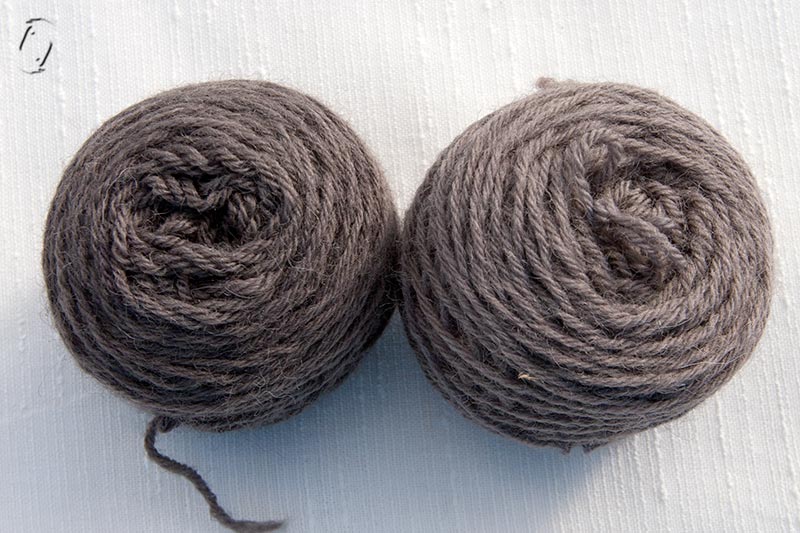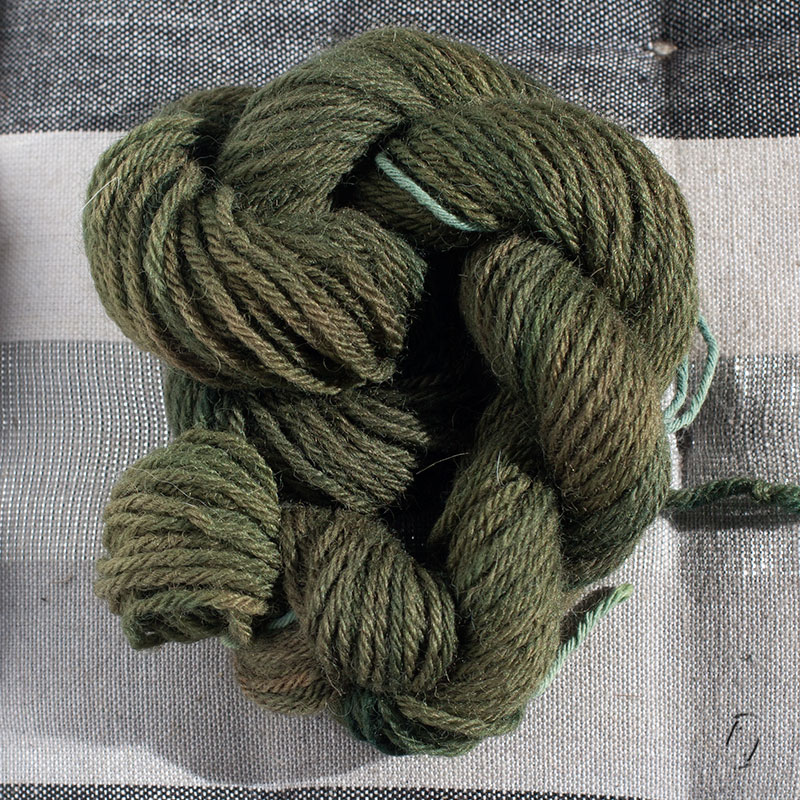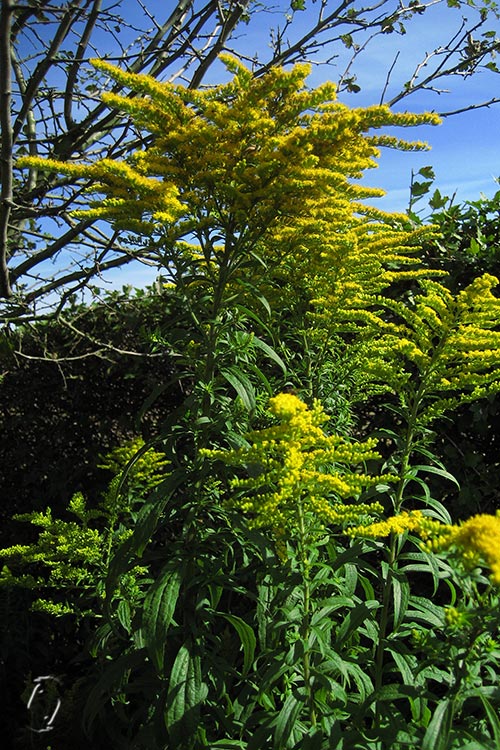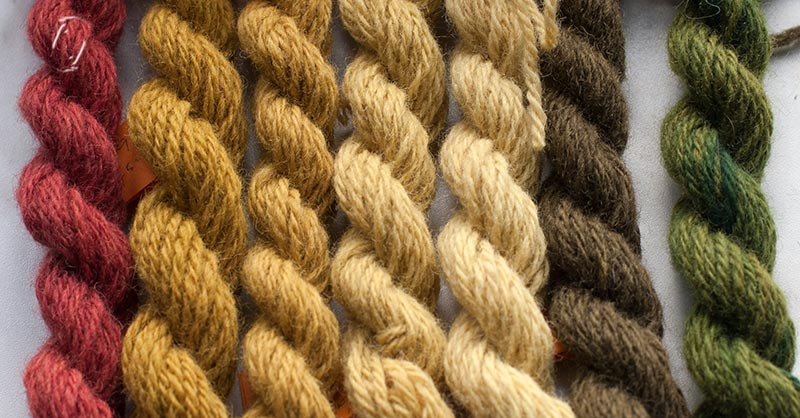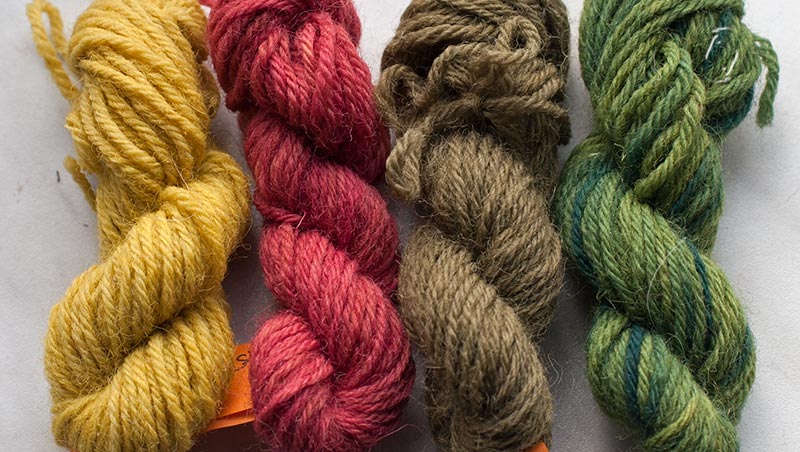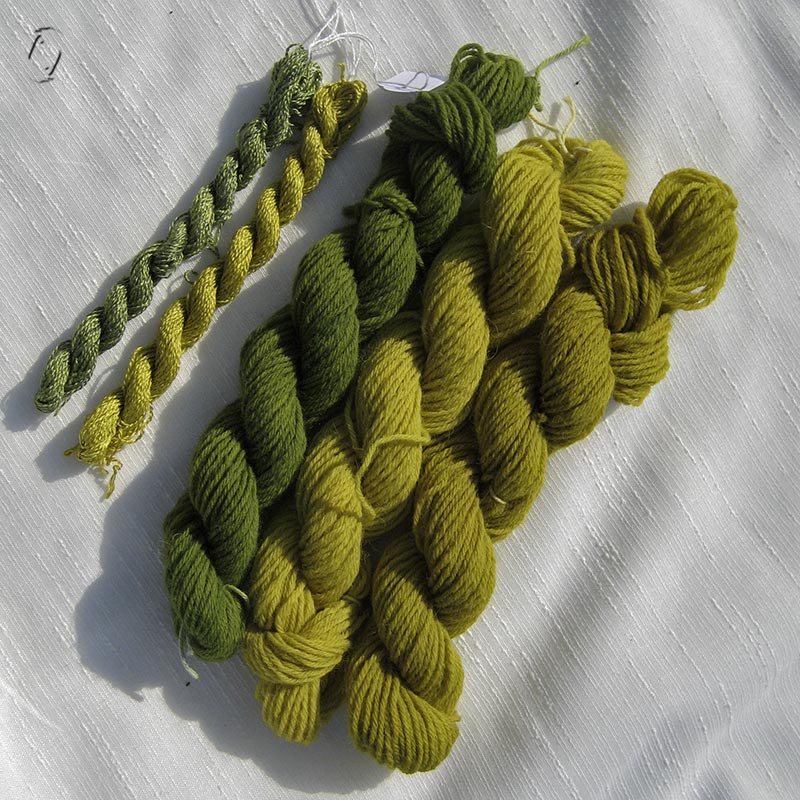Since I really have nothing much to show yet of all my ideas (and sometimes they stay ideas because I get a new one for the same yarn), MotherOwl suggested that I just share some of my design ideas. Today, then, will be yarn. Another day perhaps something more painterly? And some plants are brewing…
So here’s a collection of things that you could get to see more of in the coming months, or a look into my brain. It may seem like a lot, but in fact it’s just a fraction of what I’ve planned and there is no deadline, things may get erased or changed along the way. I have a tendency to just write down my ideas rather than draw them, but if you find it interesting I may be persuaded to change that habit actually, because I think it would be a good practice. Perhaps working more on each project idea will help me weed some out?
Covering the halfdone warp on my large frame in the hope that the kittens don’t find it…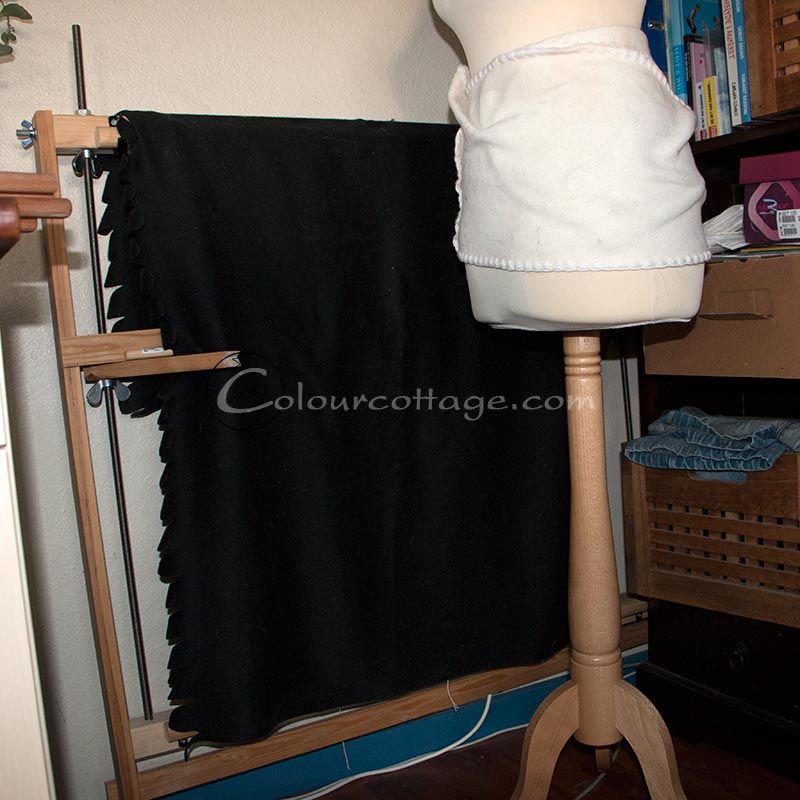
I’m planning to make a small bag with this handspun yarn practising a specific tapestry technique for joins. Homemade bobbins! I just hope there’s enough yarn for the strap too, I’ve calculated and calculated, but since this is a new thing for me, you can’t really be sure to get it right.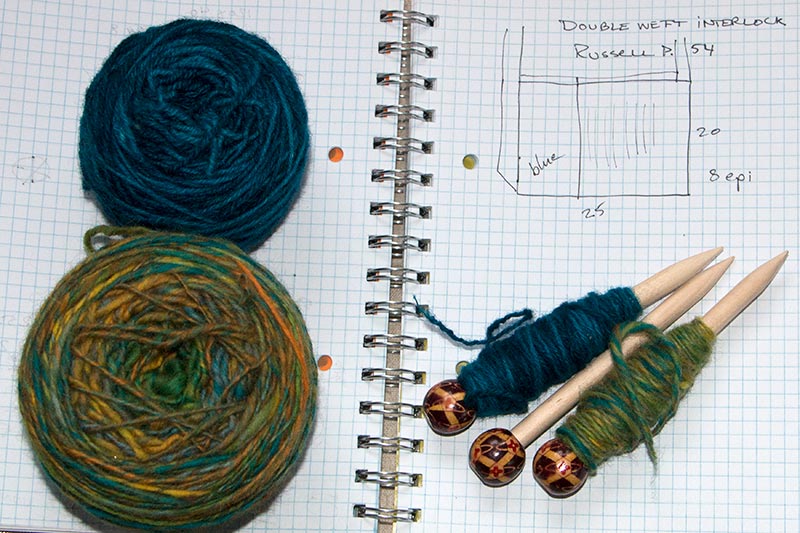
Semi-solid skeins are to be dyed to go with each of these two snow dyed yarns. A dark red/rust (or a dark green – I’ll have to sample) for the one on the left and blue/marine for the right. The third skein I gave to a friend of mine who knitted herself an awesome hat and mitts!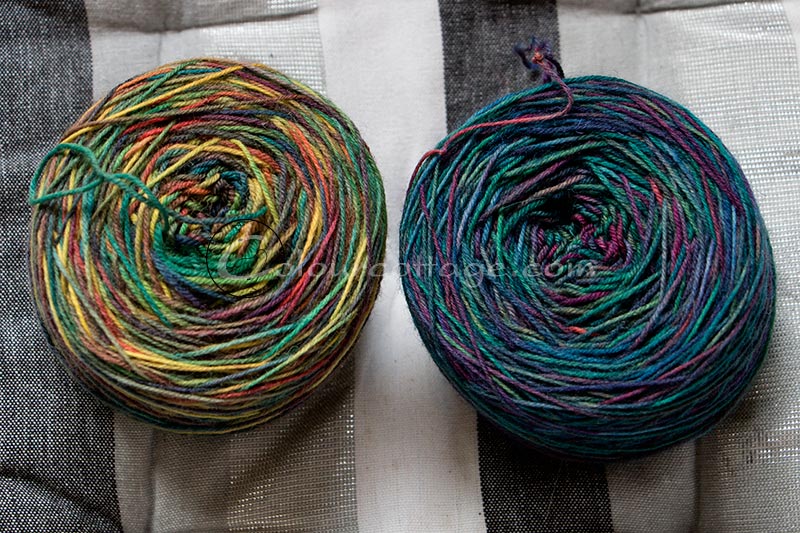
Making an inner hat from a soft yarn, then trying to decide which of my oldest handspuns will be the bulky outer hat.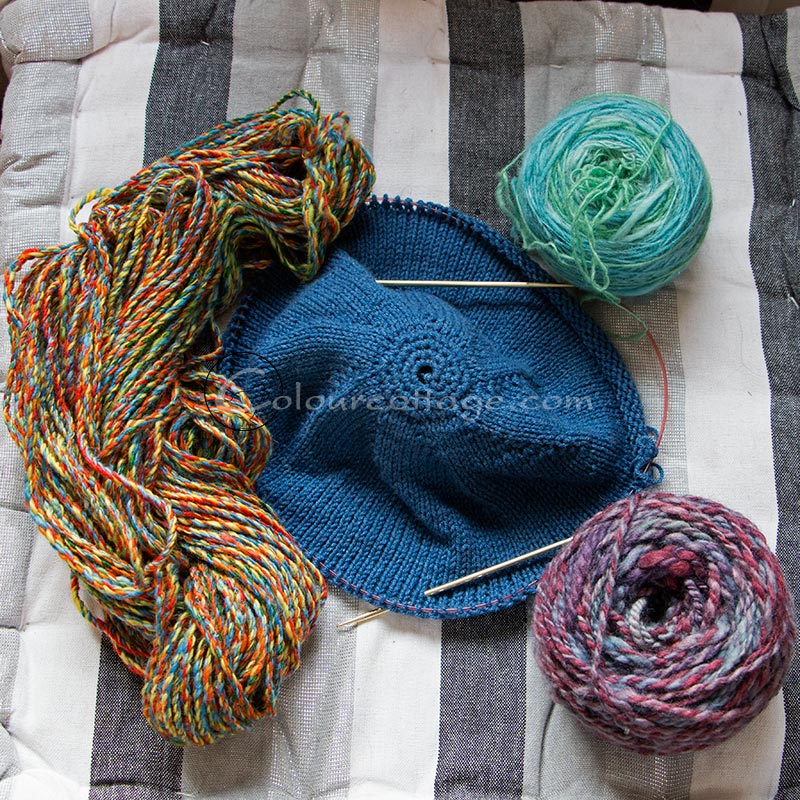
Drachenwolle sock yarn. Houndstooth weave? Huge cowl/scarf/shawl? I’m not really a sock knitter.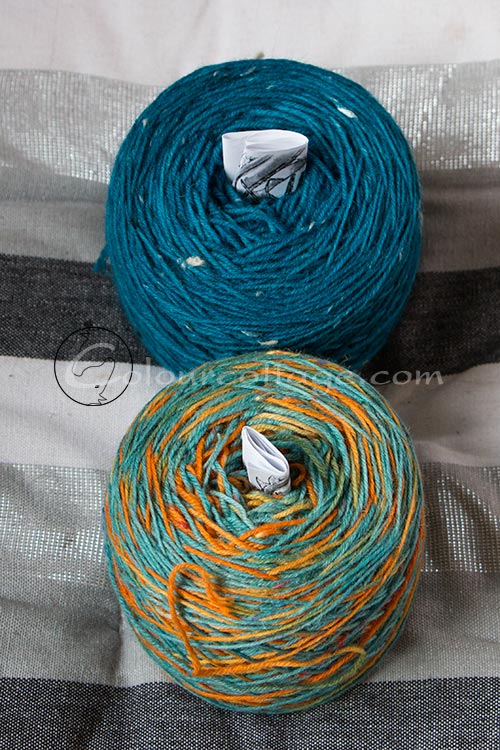
Trying to make a fun design for the yarn below. Actually I’m not going to use the model shown, but I couldn’t find the other sketches. Still debating the basket weave however, to break up the stripes I’d get if I knitted the yarn. Possibly I’d get really horrible pooling instead. And in fact, after some sampling, this yarn frays way too much to be woven, it’s no good as warp at any rate, very sticky. So now I’m contemplating a linen stitch on large needles, alternating 2 skeins every other row, which is doable even if you work flat. I don’t like to knit the body in the round, then the yoke flat, because that makes the rows half as long = twice as wide when it comes to the width of the stripes = no look good. (imho) Or I could double the strands and mix it with a heavier solid, but I don’t want stripes at all, I also don’t want to have to do stranded colourwork, because then I’ll never finish. In fact this could have been a blog post all on its own…
